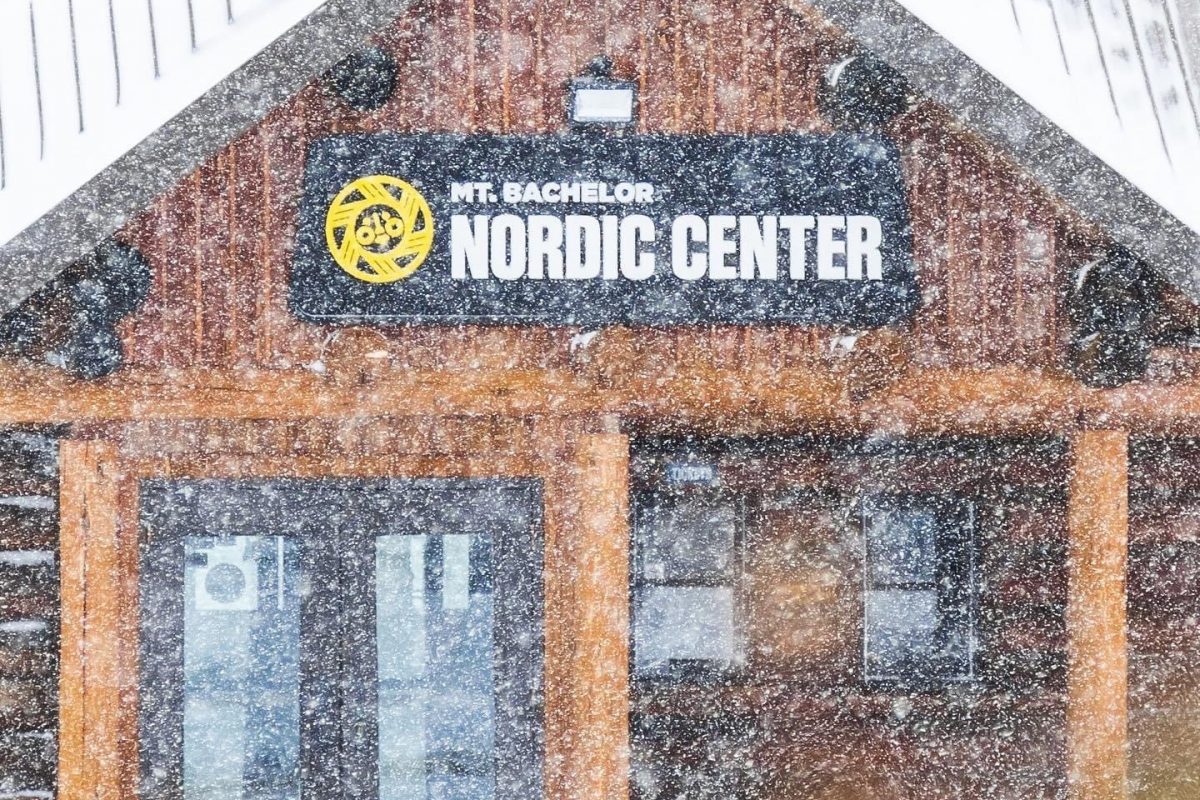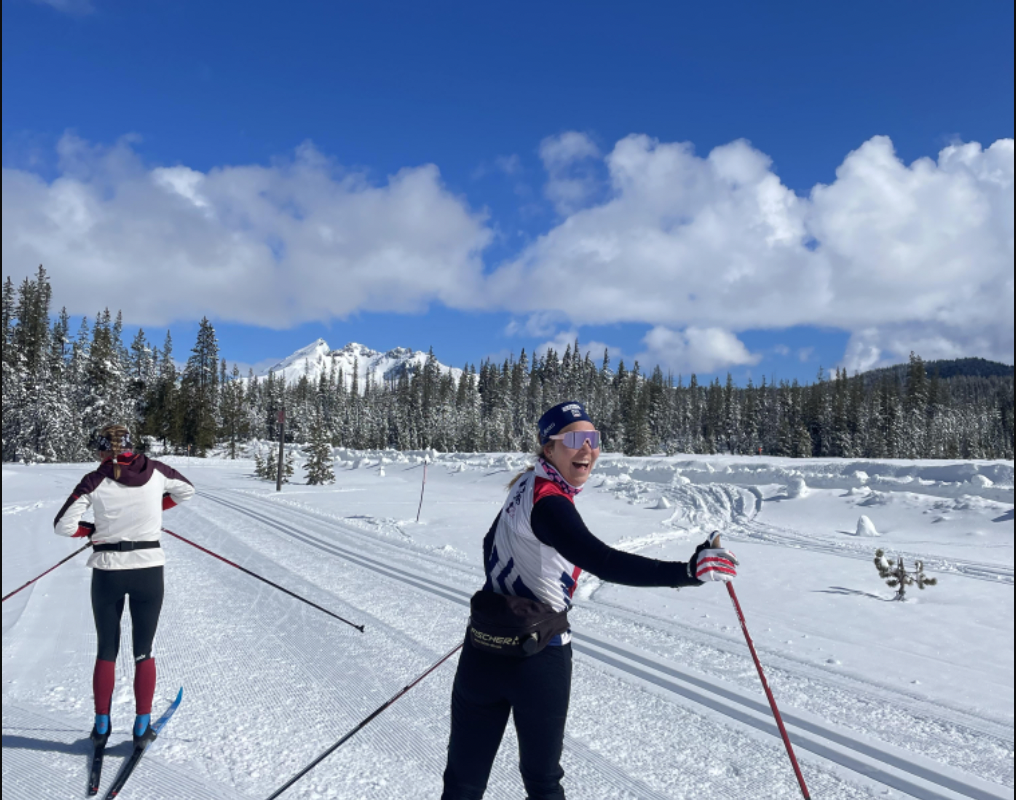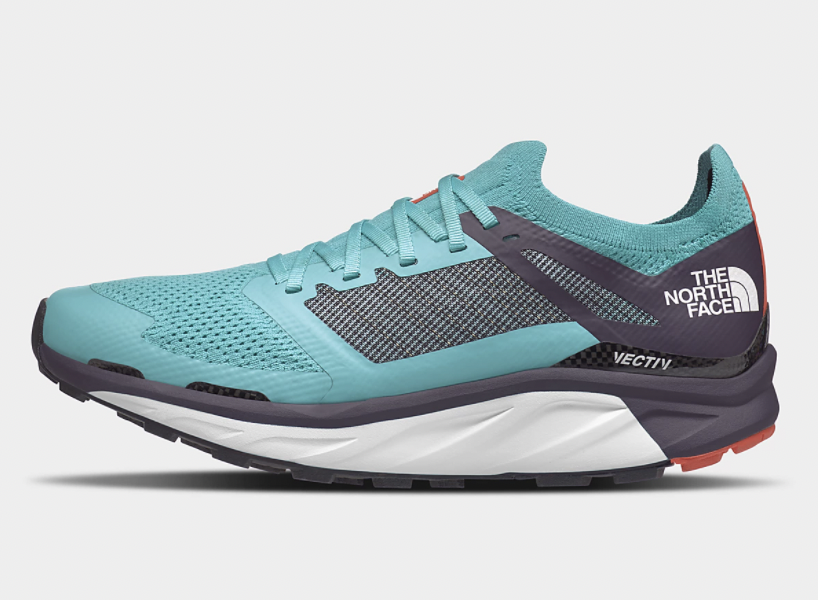
Maplus is an Italian company, specializing in ski wax and roller skis. North American distributor Innovation Inc. has been importing these products since 2005, and Maplus is an official wax supplier to the US Ski Team. Maplus roller skis were used for the 2009 US Nordic Combined National Championships last October in Lake Placid. All racers competed on new Maplus Speed skate skis.
All Maplus skis feature aluminum shafts, officially described as a “patented frame in a special super light alloy highly resistant to dynamic stress.” The skis are light, and the skate skis generally fast – with wheel choices including “skate race” and “in-line Skate free-wheels.”
We tested two pairs – the Easy Classic (Hard Training speed) and the Flash skate. The Speed skate features a smaller, wider wheel than the Flash and could be a more versatile ski.
More information on Maplus roller skis can be found at www.maplus.com.
Maplus roller skis come in the following models:
Skate Skis
Flash
Speed
Classic Skis
Easy
Twin
Tris Junior
The Tris Junior is an entry-level ski with dual rear wheels for added stability, and is an affordable $180. All skate skis are 530mm long and come in two choices of speed each. The Flash has 100x20mm wheels and the Speed, 80×28. The Easy and Twin 700mm long and are fitted with 73x55mm wheels.
With the exception of the race version of the Flash (which we tested) all Maplus skis are an excellent value, with prices among the lowest available in the US.
Maplus Easy Classic ($205.00)
![]() https://www.maplus.com/US-Maplus-Easy-Rollerskis-Classic-Hard-Training-Roller-skis.html
https://www.maplus.com/US-Maplus-Easy-Rollerskis-Classic-Hard-Training-Roller-skis.html
Summary: The Maplus Easy Classic has a unique feel, with a long narrow shaft, and soft wheels. In terms of overall performance, it is a solid slow training classic ski.
Pros: Least expensive classic ski on the market. Soft wheels and flexible shaft make for a relatively smooth ride, especially for an aluminum shaft ski. Long shaft gives a more ski-like feel when striding. Light.
Cons: Narrow, thin shaft give this ski a less-than solid feel. Comes with rear ratchet.

Name aside (is “Easy” really the best Maplus could come up with?), the Maplus Easy Classic is a solid, if unremarkable, classic training ski. The most apparent distinguishing feature is the speed. The wheels are a very soft rubber, making for a slow ride, similar to the Pro-Ski Roadline Tech and the One-Way Classic 5.
The Easy comes in two different speeds – Classic Hard Training and Classic Fast Training. We tested the Hard Training version.
Strong skiers will still be able to double pole quite a bit, but be prepared for more double-pole kick and striding on these skis.
Despite being a similar material, the shaft differs significantly from other skis we tested. It is narrow and thin, making for a light ski with quite a bit of flex. In fact, the Easy Classic had the most “give” of any aluminum shaft classic ski we tested.
Performance-wise, this is a mixed bag. The soft shaft absorbs vibrations and bumps better, and gives a more “ski-like” feel. It isn’t too soft – you don’t feel like you are losing power with each kick. The ski is also fairly light, though with most of the weight concentrated in the wheels, the difference over other models is not significant. On the flip side, the narrow shaft gives a less stable platform and overall, the skis do not feel robust.
Another nice feature of the shaft is the length. I have found that millimeters do make a difference when it comes to length, width and wheel diameter. The length of the Easy Classic means that the front wheel stays on the ground when kicking – even with a full range of motion. This is important from a ski sensation perspective, and also provides for easier balance.
The wheels feature an interesting non-uniform surface. It is unclear how long this will last – the wheels are soft, so I would expect relatively rapid wear, but this unique “tread” provides better tracking and wet-road performance.

The Easy Classic comes with mud-guards, always a nice accessory when skiing in the rain. They look flimsy, and one of mine broke off quite quickly.
The skis come with a rear mounted ratchet, but rear and front forks are identical, so it is not a problem to move the ratcheted wheels to the front.
One of the big plusses of the Easy is the price. A fully functional classic roller-ski for $200 – this is an excellent value.
FasterSkier’s Buying Advice: This is a very functional classic ski, and a good option for someone looking for a slower ski. The ride is relatively smooth, and the soft shaft gives a nice feel. The biggest drawback is the overall feel of the ski. It just seems a bit cheap – there is little solidity. On the plus, it is cheap – in price that is. At only $200 a pair, this is one of the best deals available for classic skis.
Maplus Flash Skate Ski ($270)
![]() Briko-Maplus Flash Rollerskis (Skating Race) Roller Skis
Briko-Maplus Flash Rollerskis (Skating Race) Roller Skis
Summary: The Maplus Skate is a fast race-oriented ski. Good for balance, high-speed technique and competitions, this isn’t a great every-day training ski.
Pros: Light, challenges balance, good for pushing the limits of your speed.
Cons: Too fast for every-day training. Narrow, thin shaft and narrow wheels makes this a tough ski to balance on.

The Maplus Flash is a standard aluminum shaft ski. Constructed from a single piece, with an integrated fork cut out at either end. Narrow, thin, and short, this is a light ski that feels fast as soon as you click in.
The shaft is very similar to the Easy Classic, providing decent flex for aluminum.

The wheels are a hard blue urethane and are unique in that they almost come to a point. Most wheel profiles follow a smooth curve – the Maplus wheels decrease surface area with the road – less friction means faster skis and less to stand on. That was the defining characteristic of these skis – they are tippy! The combination of the narrow shaft and the wheels make fully committing and riding each ski a constant challenge. For that reason I would not recommend these for beginning skiers or those that struggle with balance already. They will be frustrating and potentially dangerous. The pointed wheels place the shaft relatively far off the ground, adding to the tippiness.
But it isn’t all bad. Advanced skiers will be well-served having their balance and control pushed in this way. If you can ski on the Flash, hard icy skate conditions will be a piece of cake. All those small control muscles in the shin and ankle will be well developed.
The high-speed also adds to the lack of stability. These skis are not designed for much V1. They are not quite as fast as the One Way Skate 5, but they move. If you can handle the balance challenge, the Flash would also be a good option for ultra-long workouts designed to cover as much ground as possible. And normal training will require constant focus to keep heart rates in the appropriate level. This type of focus is definitely a plus, and there is something to be said for the adage, “If you want to race fast, you need to train fast.” These skis are billed as a racing ski, and they would server admirably in that capacity.

There is a significant price disparity between our test model – which came with the light-weight racing wheels, and the version of the Flash that includes in-line skate wheels. The in-line skate version lists at only $130 – just about the cheapest skate roller ski on the market. I can’t comment on the performance of those wheels however.
FasterSkier’s Buying Advice: The Maplus Flash is too fast for every-day training, but is a good challenge, pushing balance and high-speed techniques. An excellent racing ski, it forces focus on both technique and effort.
Topher Sabot
Topher Sabot is the editor of FasterSkier.




5 comments
tradesmith45
July 14, 2009 at 10:35 pm
Hey Topher, more great reviews & interesting products – especially the unique classic tire. Our team has been using some Maplus wax/tools & have been very pleased.
The unique Maplus tire profile caused me to think about the current crop of combi rollers. As you have noted, most (all?) make a comprise of either classic or skate performance. Yet the idea is attractive on economic terms. I’m wondering if you have a design idea of a more ideal combi roller? Do all of the existing combis use 70-74mm wheels? Have you tried a model that is more successful than others? Seems like an 80 x 35-40mm wheel would be a better starting point but as far as I know there are no 80mm classic rollers out there – correct?
Last and perhaps most important is roller ski safety. You’ve done a terrific job in your reviews discussing ease or lack of balance on the different models. That’s an important part of biff prevention. I hope at some point you’ll get to use & review the various adjustable speed reducers & brakes that are on the market. Another safety issue is how slippery some plastic wheels are in the wet (like on the Flash maybe??).
Thanks again for your great work!
sailguy
July 16, 2009 at 11:27 am
These rollerski reviews have been great. Probably my favourite articles in fasterskier so far, although there was some great race coverage last season to compete for the title of ‘best ever’.
On the west coast, we spend too much time rollerskiing in the rain. Many of taller skate wheels are very challenging on wet road. I have elpex team 480s with the soft wide combi wheels which give solid grip skating in rainy conditions, but are a long way short of ideal in the dry.
Is there any chance of persuading your testing team to take a garden hose and the rollerski collection out to some freshly painted crosswalk?
FasterSkier
July 16, 2009 at 12:38 pm
Unlikely 🙂 There is no question that some wheels are better than others in wet conditions. Wider wheels mean more surface area and more friction. Softer rubber is definitely better. But as you mention, it is a tradeoff. Autumn leaves are another hazard. When it is very wet and slippery, I usually opt to double pole on classic skis. Most large diameter skate wheels are fairly similar, so it is easy to make broad judgements on wet road performance. Narrow and hard will be bad, wide and soft better. Urethane will be terrible!
I’m glad you have been enjoying the reviews!
FasterSkier
July 16, 2009 at 12:43 pm
In regards to combi skis, I am not a big fan. In general combi equipment is a compromise and you end up with mediocrity across the board. We did test the Pro-Ski S2 combi which is a great skate ski on good pavement, but is lousy for classic.
The Ski-Skett Nord Classic is a good classic ski, and decent skater. I am also testing a pair of Marwe combis. They are similar to the Ski Sketts in that they offer good classic skiing and mediocre skating. I am also testing some prototype skis from another company that use a wheel diameter for classic that could make them a viable combi ski. But overall it is hard to do both well.
In regards to safety, you are completely right. It is all about staying on your feet and being visible. I have tested two different skis equipped with brakes, and one pair with speed reducers. Some manufacturers did not send skis with their speed reducers, so I won’t be able to comment across the board.
tradesmith45
July 17, 2009 at 8:27 pm
Here’s some Eugene, OR experience roller skiing in the wet & on wet leaves. On bare wet asphalt, of the 100mm wheels we have (sorry no Elpex to compare to), the RollerSki.com #2 & #3 wheels have been ok – almost as good as a 70x40mm rubber wheel. Their harder #1 wheel, Marwae 610 & Proski plastic wheels can be a bit too slick on asphalt that’s wet. The V2 150mm & 125mm are better than any of these. Add wet leaves or moss & all of these get slick but probably the V2 150mm does the best in slick wet conditions. Mind you, I wouldn’t try a Zone 4-5 skate interval workout with wet leaves on anything. A Zone 1 OD workout on the other hand is easily doable with care.